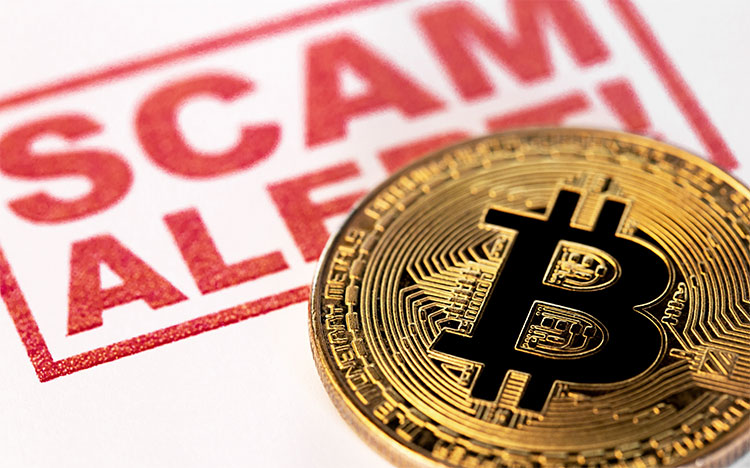Not All That Glitters Is Bitcoin
The world of crypto is full of innovation and opportunity — but it’s also filled with risks. For every legitimate project, there are dozens designed to mislead, exploit, and steal from unsuspecting investors.
If you’re new to the space (or even if you’re not), understanding how these scams work — and how to avoid them — is one of the most valuable investments you can make. The truth is, staying safe in crypto isn’t about luck. It’s about knowledge.
Here’s a breakdown of the most common crypto scams and how to protect yourself like a seasoned investor.
1. Phishing Attacks: Fake Websites and Wallet Drainers
These scams often start with a seemingly innocent message — a link sent through email, social media, or a fake customer support chat. The site might look identical to your exchange or wallet login page, but it’s designed to steal your credentials or connect directly to your wallet and empty it.
How to protect yourself:
- Never click on unknown or unsolicited links
- Bookmark official exchange and wallet websites
- Use a hardware wallet whenever possible
- Always double-check the web address — for example, binance.io is not the same as binance.com
2. Rug Pulls: When a Project Disappears Overnight
This scam starts with hype. A new token launches, promising high returns and community-driven goals. It gains attention, liquidity increases — then the developers vanish, taking the funds with them and leaving investors with worthless tokens.
How to protect yourself:
- Avoid projects with anonymous or unverified teams
- Look for locked liquidity and audited smart contracts
- Be skeptical of projects offering “guaranteed” returns — if it sounds too good to be true, it usually is
3. Pump-and-Dump Schemes
This tactic typically involves influencers or closed chat groups pushing an obscure token. The sudden interest drives up the price. Then the insiders sell off their holdings, causing the price to crash while newer investors are left holding the loss.
How to protect yourself:
- Don’t invest based on social media hype
- Be cautious with low-cap tokens that spike in price overnight
- Focus on coins with real use cases, active communities, and a reliable track record
4. Fake Giveaways and Impersonators
You’ve probably seen posts that say, “Send me 0.1 BTC and I’ll send you back 1 BTC.” These are often made to look like they’re from celebrities or influencers — but they’re always scams.
How to protect yourself:
- Legitimate giveaways never ask for money upfront
- Don’t trust accounts based solely on verified badges
- Avoid responding to private messages offering investment deals or “insider tips”
5. Ponzi Schemes Disguised as Passive Income
These schemes promise unrealistic monthly returns from a small upfront investment. Early participants may even receive payouts — which often come from new user deposits. But once the flow of new investors dries up, the entire structure collapses.
How to protect yourself:
- Be wary of “too good to be true” returns
- Look for clear explanations of how the project earns money
- If it’s unregulated and the team is anonymous, it’s a major red flag
6. Fake Wallets and Browser Extensions
A common trap is downloading a wallet or browser extension that looks legit — but is actually malware designed to steal your private keys.
How to protect yourself:
- Only download wallets from official websites or trusted app stores
- Read user reviews carefully and check for impersonators
- Never enter your seed phrase unless you’re recovering a wallet — and never share it online
7. Malware and Keyloggers
Some scammers use malicious software to track everything you type, including your wallet passwords and seed phrases. This kind of malware often comes through shady download links or infected email attachments.
How to protect yourself:
- Don’t open files or links from unknown sources
- Use antivirus software and a secure browser
- Store your seed phrases offline, preferably on paper — not on your phone or computer
Quick Safety Checklist
Here are some basic practices that every crypto investor should follow:
- Use a hardware wallet for serious holdings
- Bookmark your exchange and wallet login pages
- Never share your seed phrase with anyone
- Don’t trust unsolicited messages or DMs
- Always verify website URLs before entering login info
- If something feels off — trust your instincts
Your Best Defense Is Awareness
Crypto still feels like the Wild West — full of excitement, but also uncertainty. Scammers count on greed and confusion to succeed. But with the right knowledge and a cautious approach, you can avoid most traps and navigate the space safely.
You won’t be able to eliminate every risk. But you can make yourself a very hard target.
Stay sharp, stay informed, and always double-check before you click, send, or sign.



